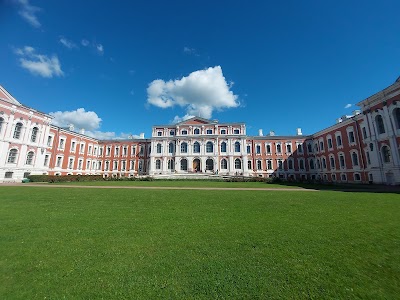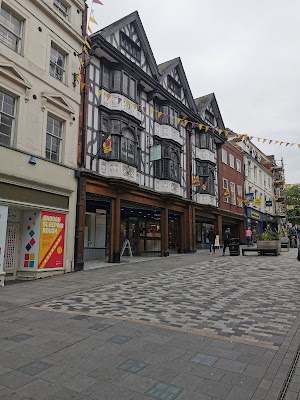Jelgava Palace (Jelgavas pils)
Overview
Introduction to Jelgava Palace
Jelgava Palace, known in Latvian as Jelgavas pils, is a magnificent landmark located in the heart of Jelgava, a charming city in Latvia’s Dobele Municipality. Once the residence of the Dukes of Courland, this stunning Baroque palace stands as a testament to the rich history and architectural grandeur of the region. Nestled by the banks of the Lielupe River, the palace is surrounded by lush gardens, offering visitors not just a glimpse into Latvia's past but also a serene escape into nature.
The palace was constructed in the early 18th century, primarily designed by the renowned architect Francesco Bartolomeo Rastrelli, who is also famous for his work on the Winter Palace in St. Petersburg. Its striking façade showcases intricate details and opulent Baroque style, making it a visual delight for architecture enthusiasts. Visitors often marvel at the grand entrance, adorned with elegant columns and ornate decorations, which invites them into a world of historical significance and artistic beauty.
Historical Significance
Jelgava Palace has served various purposes throughout its storied history. Initially, it was constructed as the residence for the Dukes of Courland, where they hosted lavish gatherings and royal events. The palace witnessed numerous historical events, reflecting the political and cultural evolution of the region. After the dissolution of the Duchy of Courland, it went through phases of neglect and restoration, finally becoming home to the Latvian Agricultural University.
Today, the palace functions as the main building of the Latvia University of Life Sciences and Technologies, blending education with historical preservation. As you stroll through its halls, you’ll find that the palace is adorned with period furniture, artworks, and exhibitions that provide insight into both the ducal lifestyle and the agricultural advancements of Latvia.
Exploring the Surroundings
Beyond the palace itself, the surrounding park is a delightful place to explore. The beautifully landscaped gardens, dotted with sculptures and fountains, offer a picturesque setting for leisurely walks or picnics. The park is a popular spot for both locals and tourists, especially during the warmer months when vibrant flowers bloom and outdoor events are held. Keep an eye out for the charming gazebo and the impressive view of the Lielupe River, which adds to the natural beauty of the area.
For those interested in local culture, the nearby Jelgava city center is bustling with cafes, shops, and markets where you can experience the local vibe. Don't miss the chance to sample traditional Latvian dishes or pick up unique handcrafted souvenirs that reflect the country's rich heritage.
Visiting Tips
When planning your visit to Jelgava Palace, consider allocating a few hours to fully appreciate both the palace and its surroundings. Guided tours are available, providing in-depth information about the palace's history and architecture, making it a worthwhile experience for history buffs. If you're visiting during the summer months, check for special events, such as outdoor concerts or exhibitions, which are often hosted in the gardens.
Lastly, Jelgava is conveniently connected to Riga, the capital of Latvia, making it an easy day trip for travelers eager to explore beyond the capital's bustling streets. Whether you’re an architecture lover, a history enthusiast, or simply in search of a peaceful retreat, Jelgava Palace offers a unique window into Latvia's rich cultural tapestry, making it a must-visit destination on your journey through this beautiful Baltic country.




